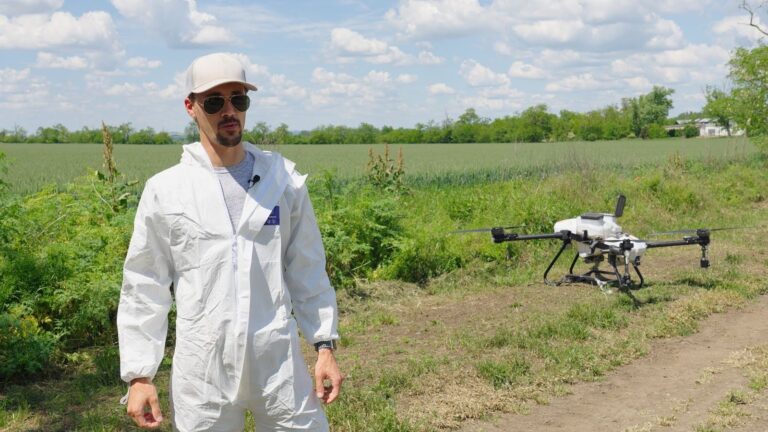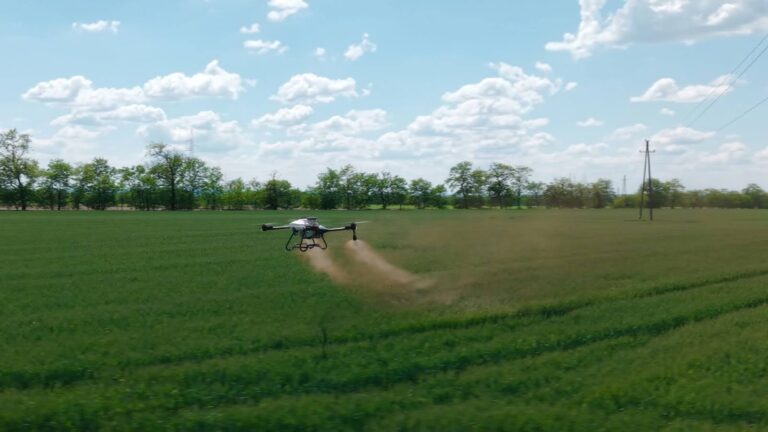Drone Power in Real Life: Field Experiences with the L30 V2

Modern agriculture is constantly evolving, with technology playing an increasingly important role in making work more efficient, precise, and sustainable. For this article, we interviewed agricultural producer Gábor Simon, who greatly assisted us by showcasing all aspects of the operation. We investigated how the ABZ Innovation L30 V2 spraying drone performs in practice and what benefits it provides to farmers, based on a recent field operation.
– What was the specific application and setting for the ABZ Innovation L30 V2 drone?
Gábor Simon: The ABZ Innovation L30 V2 spraying drone was recently deployed at the MATE (Hungarian University of Agriculture and Life Sciences) Józsefmajor Farm, situated near Kerekharaszt and Hatvan, Hungary. The operation involved treating a 25-hectare wheat field, with 2 hectares intentionally left as a control plot for comparative analysis. This particular application was officially accredited by NÉBIH (National Food Chain Safety Office), underscoring its adherence to national agricultural standards. The project was a collaborative effort involving ABZ Drone Kft., the Hungarian University of Agriculture and Life Sciences, and Mikrovital, applying the Mikrovital Avanti product at a spray volume of 20 liters per hectare.
– What flight parameters and operational setup were utilized for the spraying task?
Gábor Simon: For this operation, the ABZ Innovation L30 V2 maintained a maximum flight altitude of 3 meters above the crop canopy. The drone operated at a consistent speed of 7 meters per second. To facilitate the mixing and supply of the spray solution, a 300-liter IBC (Intermediate Bulk Container) tank was integrated with a Drone Filler system. This setup required two mixing rounds to cover the entire 25 hectares: an initial 300 liters, followed by an additional 200 liters. The tank is easy to refill, both from the top and bottom with a simple connector, simplifying the process once the water supply is managed. The Drone Filler enables early circulation of the tank mixture, ensuring a homogenous spray solution before application.
– How does the ABZ Innovation L30 V2 ensure precision and uniform application?
Gábor Simon: Precision and uniformity are paramount in agricultural spraying to prevent under-dosing or over-dosing, which can negatively impact crop health and environmental safety. The L30 V2 addresses this through a combination of advanced features. Its RTK (Real-Time Kinematic) Accuracy, utilizing an EMLID Reach RS2 RTK base station linked to the drone, ensures that the flight plan is executed with sub-centimeter precision, mirroring the accuracy of preliminary surveys. This high degree of positional accuracy is crucial for consistent coverage and minimizing application discrepancies across the field. The drone’s automated flow rate adjustment system further contributes to uniformity by continuously matching the liquid flow to the drone’s speed, maintaining the precise target application rate. This automation is fundamental to achieving consistent coverage. An optimized mixing process, facilitated by the Drone Filler, ensures a perfectly homogeneous spray mixture, preventing inconsistencies in product concentration. Furthermore, the L30 V2 is equipped with state-of-the-art Controlled Droplet Application (CDA) systems that use rotary atomizers to generate a narrow, highly uniform range of droplet sizes, allowing operators to select the optimal size for specific applications. The mandatory use of drift reduction agents, like Dropmax at a 0.1% mixing ratio, is also crucial for minimizing off-target drift and ensuring the sprayed material reaches the intended crop.
– What safety measures and operational considerations are taken into account during drone spraying?
Gábor Simon: Ensuring safety and optimal operational conditions is a continuous process during drone spraying. We strictly confine our operations to wind speeds of up to 4 meters per second, and we use a portable anemometer every 10 minutes to monitor this limit. Work is immediately paused if the wind exceeds this threshold to ensure effective application and minimize drift. Proactive weather planning is also crucial; a colleague provides hourly forecasts to help us minimize delays from unfavorable conditions. Furthermore, the shift from manual refilling to automated mixing systems with high-performance pumps and filters significantly enhances operational safety by reducing direct human exposure to concentrated chemicals. Potential sources of interference, such unsuspecting high-voltage lines that could affect RTK signal reception, are also actively monitored and managed.
– What is the overall efficiency and impact of using the ABZ Innovation L30 V2 for agricultural spraying?
Gábor Simon: The L30 V2 demonstrates significant efficiency in agricultural spraying. The target performance for this operation was 14-15 hectares per hour. Despite minor delays due to wind, the overall application time aligned with expectations. The use of advanced mixing systems and RTK-precise flight paths contributes to a streamlined workflow and effective coverage of large areas. This results in optimized resource utilization, reduced labor, and a safer working environment, ultimately enhancing crop health and yield potential.



